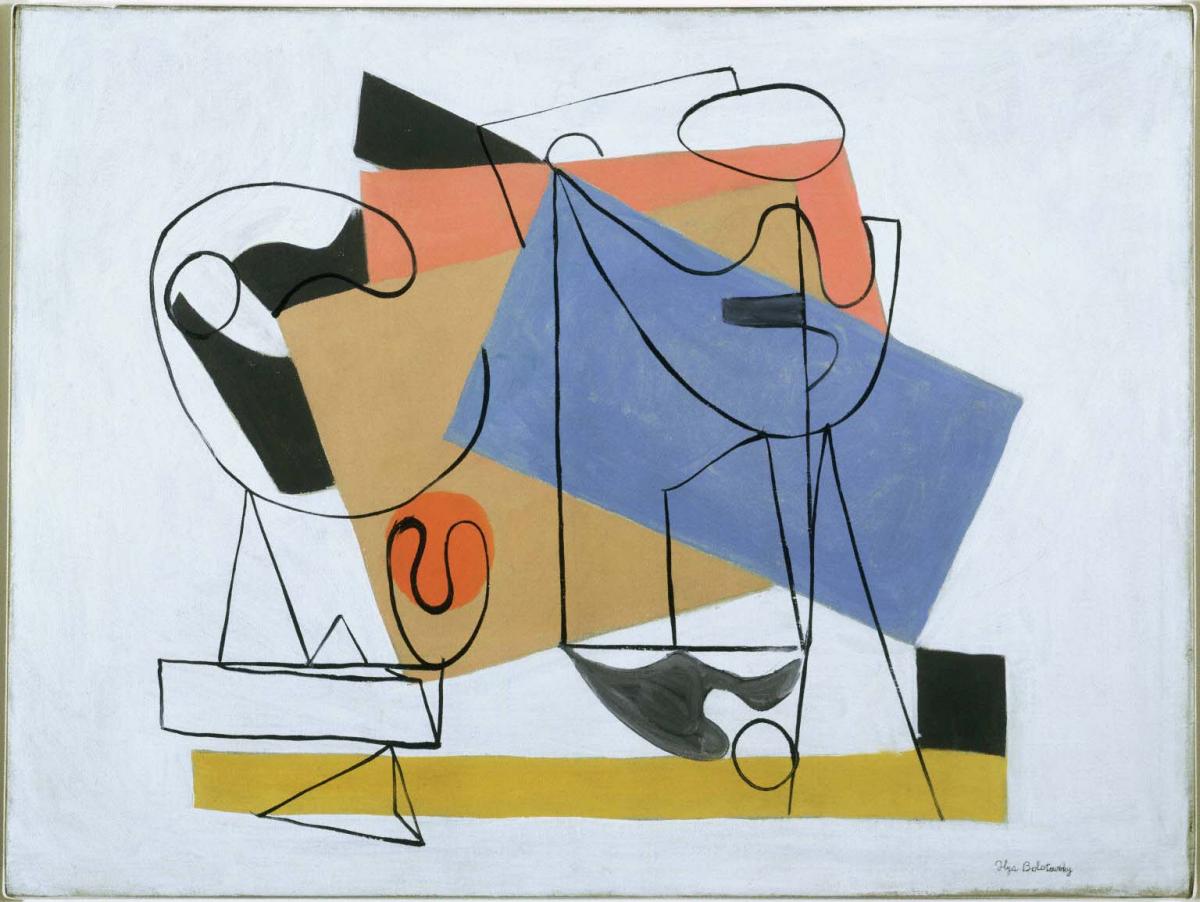Abstraction
Ilya Bolotowsky ( c. 1940 )

Russian-born Ilya Bolotowsky was one of the founding members in 1936 of the American Abstract Artists, a New York organization that eschewed recognizable subject matter and advocated, instead, for compositions based on pure form and color. Introduced to the cubism of Pablo Picasso and Fernand Léger in Europe in 1932, he discovered the work of Piet Mondrian and Joan Miró on his return to New York. Bolotowsky was also an advocate of the Neoplastic ideals of order and balance attained through pure geometric abstraction.
Bolotowsky painted Abstraction in 1940, at a time when he was working in several different artistic styles; this painting is a synthesis of Bolotowsky’s various styles. In Abstraction, Bolotowsky laid down flat panels of color in the background, thus flattening the picture plane, a technique typical of cubism. The curvy, outlined black forms are reminiscent of Miró’s surrealist work. In 1940, Bolotowsky had yet to fully embrace the Neoplastic’s use of primary color and complete geometric form, but had begun to punch-up his palette, adding a pop of color to the painting. Abstraction sits at the crossroads between Bolotowsky’s shifting styles, giving a glimpse into his artistic evolution.